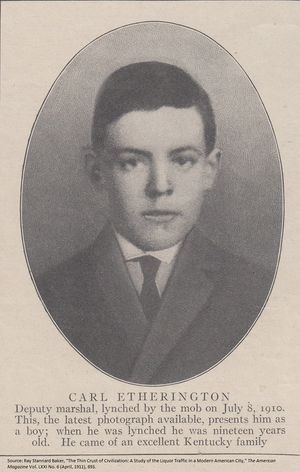Murders and Homicides
.22 Caliber Murders
For a whole year between December 1977 and December 1978, two brothers, Thaddeus and Gary Lewingdon, had folks in three counties afraid for their lives. They began a series of murders that ended the lives of ten people in Licking, Fairfield and Franklin Counties. Their motive seems to have been money, according to the two books that have been written about the cases .
The first killings occurred at Forker's Café on Union Street in Newark on December 10, 1977. Joyce Vermillion and Karen Dodrill had closed the bar and headed for their cars when they were shot to death and robbed. The second case involved Dorothy and Robert McCann and their friend, Christine Herdman, at the McCann home in Franklin County on February 13, 1978. The third case was Jenkin Jones at his home on State Route 37 south of Granville. Fourth was Rev. Jerry Fields who was serving as a security guard at a club in Fairfield County. Fifth were Jerry and Martha Martin at their home on Morse Road in Columbus. All these nine murders were committed by Gary and Thaddeus together. Finally, Gary decided to go out on his own to kill Joseph Annick in Columbus. He made the mistake of using Annick's credit card at a department store, which led to his arrest on the store premises. A year of investigation in the three counties had seemed fruitless until Gary's arrest. He and Thaddeus freely admitted to the murders, and finally the case was solved.
A bizarre twist to the entire murder spree was the fact that Claudia Yasko, a young woman from Columbus, Ohio, came forward with the suspicion that her boyfriend and his buddy were the killers. Claudia had a long history of mental illness and often believed she was guilty of things which she did not actually do. Besides that, she often claimed to be psychic. She apparently knew many details about some of the cases that were not in the general media. She, her boyfriend and his friend were arrested and jailed, but then the murders continued. As it turned out, there was a link between her boyfriend and one of the killers, which provided her with information. Her attorney had enough influence to bring in investigators from Playboy Magazine, along with its unlimited resources. With the eventual confession of the Lewingdon's, these three were off the hook.
Gary and Thaddeus Lewingdon both died in prison [1]
Murder Index
For a list of murders and homicides in Licking County please see the Local History files at OH Ref 364.1523 Mu v. 2008 in the Reference Department of the Licking County Library Main library in downtown Newark.
Below is an index of the Murders file begun by librarian Dan Fleming in 2008.
--PDF of Murders Index--
Newark Lynching
In January 1909 an election was held in Licking County to determine whether the county would be “wet” or “dry” regarding the legal use of alcoholic beverages. The vote in the county was to go dry, but the vote within the City of Newark was to go wet. There was considerable resentment from saloon owners, politicians who enjoyed drinking, and the 2,500 employees of the American Bottle Company who lost their jobs. They manufactured more beer bottles than any other company in the world at the time.
Some saloons soon reopened in Newark despite the ban, and conditions became worse than before with alcohol, gambling, thievery, peep shows and prostitution. Complaints only got people assaulted. Common Pleas Judge C. W. Seward spent a year trying to convince Sheriff William Linke to serve warrants, but to no avail. A beer bottle was thrown through a window at Seward’s residence, so he began to keep a revolver at all times. Many law-abiding citizens left town for fear of their lives.
The ineffective Law and Order League in Newark appealed to Wayne B. Wheeler, state superintendent of the Anti-Saloon League in Columbus. Wheeler hired a group of special detectives from Cleveland to infiltrate Newark to identify the culprits. He placed the detectives under the control of the Law and Order League.
After the detectives gathered enough evidence to convict, warrants were sworn out before Mayor Barnes of Granville. Saloons were raided to serve the warrants, but violence ensued, and many detectives themselves were jailed by Newark police. There were threats of lynching them as well as Judge Seward.
Among the detectives who entered the Henry Saloon on the afternoon of July 8, 1910 to make arrests was 17-year-old Carl Etherington from Kentucky. The detectives were no match for the mob that faced them, and they ran out the back. Etherington became separated and was cornered by saloon owner and ex-policeman William Howard. Others began beating him. He drew his revolver in self-defense and shot Howard who died later. Etherington was then beaten until he was unconscious, and police took him to the jail.
Mobs formed all afternoon, and by 9:00 p.m. there were 5,000 men, women and children at the jail. A group stormed the jail and took Etherington at 10:30. By 10:35 he was hanging from a rope on a telegraph pole at the southeast corner of the square. The event made national news and was covered in depth by Cosmopolitan magazine. [2]
